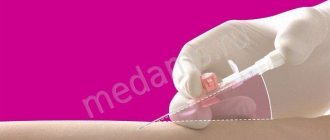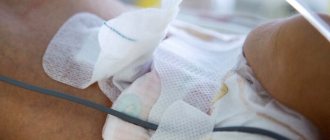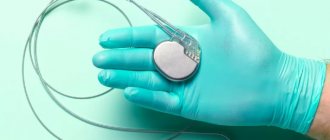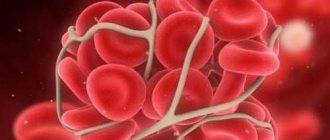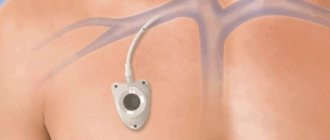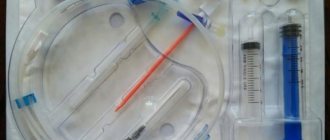Installation of a venous port for long-term access to the subclavian vein very conveniently solves the problems of long-term infusions, which is especially important in modern chemotherapy. In medical practice, for the successful treatment of a number of diseases, the patient requires long-term intravenous administration of drugs: antibiotics, chemotherapy drugs, nutrient solutions, painkillers and monitoring of blood counts. In many public clinics in our country, a peripheral or central venous catheter is still used for this purpose. Not only are these devices outdated, they bring great inconvenience to the patient, reduce the quality of life, but with prolonged use they have a number of complications.
In our article we will talk about infusion port systems and their installation. Frequent punctures of peripheral veins and the administration of anticancer drugs can lead to serious problems over time and limit the options for further treatment. Very often, complications after punctures and installation of peripheral catheters include the entry of an antitumor drug into the surrounding soft tissue, the development of chemical phlebitis, and obliteration (closure) of the lumen of blood vessels.
In the last decade, innovative devices have been introduced into our practice that are installed in the patient’s body for venous access for the purpose of long-term intravenous infusions. These are special implantable port systems that have a huge advantage over classical infusion methods. The port is a special box with a membrane made of titanium alloy, inert to the body. This box is connected to an intravenous catheter, inserted under X-ray control into the subclavian vein. The port can be used not only for infusions of chemotherapy drugs, but also for drawing blood for analysis, administering any other medications and parenteral nutrition.
Description
The central catheter is a long, thin tube that is inserted into a large vein. A central catheter is used to deliver medications, nutrition, intravenous drugs, and chemotherapy into the bloodstream.
There are different types of central catheters, including:
- Peripheral central catheter - the catheter is inserted through a vein in the arm until it reaches a vein close to the heart;
- A non-tunneled central venous catheter is inserted into a large vein in the neck or leg; the end of the tube is outside the skin.
- A tunneled catheter is a catheter that is secured in place when scar tissue forms. It can be used for several weeks or months. The catheter is inserted into a large vein in the neck, which returns blood to the heart. It is then advanced along the chest wall and removed through the skin at a distance of about 12 cm from the injection site into the vein.
- Port catheter - a device inserted into a vein in the shoulder or neck. A port (titanium chamber) is placed under the skin and a catheter is inserted into a central vein. To administer medications, the port membrane is pierced with a special needle, and for the next 3-5-7 days, any solutions in any quantities can be injected through this needle.
Advantages of port systems
- Implantable port systems provide reliable and safe access for intravenous infusions for many years.
- Port installation is performed on an outpatient basis and is painless for the patient.
- A small incision in the subclavian region heals quickly and does not require the removal of sutures.
- The light weight of the port creates convenience for the patient - after the procedure is completed and the needle is removed, the patient can easily return to an active lifestyle: shower, bath, play sports, swim in the pool, ski and even scuba dive.
- Excellent biocompatibility – minimal risk of port rejection.
- The titanium design of the camera in a plastic housing ensures long-term use and inertness of the port in tissues.
- A dense silicone membrane of large diameter helps to increase the service life of the device - the access begins to work from the first hours after implantation and functions up to 10-14 years.
- The port system does not contain latex, PVC or phthalates, which reduces the risk of infection.
Reasons for performing the procedure
A central catheter is inserted when the patient needs:
- Administer medications or fluids long-term;
- During chemotherapy;
- For nutrition, if food intake through the digestive system is impossible;
- Periodic blood sampling;
- Blood transfusion;
- For intravenous administration of drugs when the veins in the arm are difficult to access;
- For dialysis.
The central catheter is usually inserted by an interventional radiologist or vascular surgeon. Once inserted, the catheter can be used for several weeks to months.
Installation of port systems at the Innovative Vascular Center
One of the most important conditions for chemotherapy is the possibility of regular and safe intravenous administration of drugs.
The venous ports implanted at the Innovative Vascular Center are the best replacement for frequent punctures using peripheral or subclavian catheters for patients who require long-term and regular chemotherapy or other frequent long-term intravenous drug administration (intensive care unit patients). Venous ports solve a lot of problems inherent in traditional catheterization methods and provide maximum comfort and quality of life.
Our clinic has mastered and successfully used the technology of installing port systems under X-ray control. The operation takes about 30 minutes and does not require hospitalization. We implant modern venous ports into the subclavian vein under local anesthesia. Puncture of the vessel is carried out under ultrasound control, all further manipulations are performed under X-ray visualization. This approach allows you to avoid complications during this procedure. Local anesthesia is sufficient for complete pain relief for this high-tech operation.
Possible complications after insertion of a central catheter
Complications are rare, but no procedure is guaranteed to be risk-free. Before you install a central catheter, you need to be aware of possible complications, which may include:
- Bloodstream infections, when bacteria enter the bloodstream through or around the central line;
- Bleeding;
- Lung collapse;
- Arrhythmia (unstable heartbeat);
- Nerve damage;
- An air bubble or part of the catheter may block blood vessels, causing chest pain, shortness of breath, dizziness, and rapid heartbeat;
- Blood clots in a vein or catheter can block blood flow.
Factors that may increase the risk of complications include:
- Smoking;
- Difficult access to veins;
- Blood clots;
- Obesity;
- Broken bones;
- Infection;
- Poor blood circulation;
- Bleeding tendencies.
Possible complications
Complications with this operation are extremely rare. The subclavian area is examined by the attending physician before each injection; at the first signs of inflammation of the port system for chemotherapy, measures must be taken to prevent suppuration. You can only prick the membrane with a special Huber needle, observing the rules of asepsis. There is a possibility of the following problems:
- Wound suppuration after installation of a venous port system
- Thrombosis of the subclavian and superior vena cava
- Catheter kinks and system failure
- Brachial plexus injury with arm pain
In our practice, such complications were not encountered.
How is a central catheter inserted?
Preparation for the procedure
- A blood test may be done to check blood clotting;
- The doctor may ask about allergies;
- You need to arrange a trip home after the procedure;
- The patient may be asked to stop taking certain medications a week before the procedure: Aspirin or other anti-inflammatory drugs;
- blood thinners such as clopidogrel or warfarin;
Anesthesia
The area where the catheter will be inserted is numbed with local anesthesia. Depending on where the central catheter will be inserted, a sedative may be given intravenously.
Description of the procedure for inserting a central catheter
This procedure can be done either in a hospital as part of treatment or on an outpatient basis.
Having a catheter increases the risk of bloodstream infection. Hospital staff should perform the procedure while taking the following steps to reduce this risk:
- Care must be taken to select a safe place to insert the catheter;
- Wash your hands thoroughly or use hand sanitizer;
- You must wear surgical gowns, masks, gloves, and cover your hair;
- Cleanse the skin with an antiseptic;
- Use a sterile drape.
The next steps may vary depending on the type of catheter and where it is inserted. In general, staff will do the following:
- Anesthesia is administered;
- A small incision is made;
- X-rays or ultrasound are used to guide the catheter into the vein;
- Before installing the catheter, you need to cut it to the desired length. The catheter is flushed with saline (salt water);
- The catheter is guided using a catheter guide. The conductor is then removed;
- The catheter is secured to the skin (usually with adhesive tape). A cap is placed on the end of the catheter;
- A bandage is applied to the catheter insertion site. The date of insertion is marked on or near the bandage.
If a port catheter is inserted, a small cavity is made under the skin to accommodate it. The incision will be closed, usually with absorbable suture.
Immediately after the procedure
The insertion site will be checked for bleeding, fluid leakage, and swelling.
Main indications for catheterization
The main therapeutic indications may be:
- chronic or acute forms of urinary retention as a result of constrictions, stones, tumors, pathologies (hyperplasia, nephrotuberculosis, glomerulonephritis);
- comatose or other helpless state of the patient;
- for the purpose of recovery after operations (patient rehabilitation);
- for disinfecting rinses, removal of blood or pus.
Common diagnostic uses of catheters include:
- installation for the purpose of monitoring the total amount of urine;
- to assess the general condition of the bladder, urethra;
- for the purpose of collecting urine during special studies;
- in preparation for examinations for administration of contrast agents.
Bladder catheterization is widely used in urological practice both to make the patient’s life easier and to obtain reliable data during examinations.
Caring for the patient after the central catheter insertion procedure
Hospital care
After the procedure, staff may provide the following assistance to aid recovery:
- An x-ray is taken to ensure that the catheter is in the correct position;
- The catheter insertion site is periodically checked for bleeding;
- Medicines, fluids, or nutritional solution are given through the catheter;
- The port catheter is flushed to prevent blood clots;
- Steps are taken to reduce the risk of infection: Wash your hands and gloves thoroughly before touching the catheter or changing the dressing;
- An antiseptic is used to clean the exposed parts of the catheter;
- Precautions are taken when handling medications, fluids, or foods that will be administered through the catheter;
- The patient is monitored for signs of infection, which include fever, chills, and problems at the insertion site (eg, redness, swelling, drainage);
- Visitors should not be in the hospital room when the dressing is changed;
- The catheter remains at the insertion site as long as necessary.
There are also steps you can take to reduce your risk of infection:
- Employees should be asked to take all precautions to prevent infection;
- Personnel should immediately alert the physician if there is redness or pain at the catheter insertion site;
- You must wash your hands before entering the room. Visitors should not be allowed to touch the catheter.
Home care
When you return home, you should do the following to ensure a normal recovery:
- The insertion site should be kept clean, dry and bandaged. When changing the dressing, follow the doctor's instructions;
- You should wash your hands or use hand sanitizer before touching the catheter;
- You should ask your doctor about when it is safe to shower, swim, or expose the surgical site to water;
- Do not swim or bathe with a central catheter inserted;
- Any activity that could weaken the central catheter should be avoided;
- No one should touch the catheter;
- The injection site should be checked every day for signs of infection (eg, redness, pain);
- The catheter should be flushed with saline or heparin as directed by your doctor.
Features of installing a urinary catheter
Bladder catheterization is usually performed in a hospital setting by a nurse or urologist, or by calling a specialist at home.
During long-term installation, the catheter will be worn permanently, and during short-term installation of the device, it will be used for several hours or days in the hospital.
Next we will look at how to place a urinary catheter.
Preliminary preparation
Immediately before the procedure, the patient washes, shave, and the medical worker prepares the necessary tools and materials:
- Disposable sterile gloves.
- Oilcloth or diaper.
- Gauze napkins.
- Sterile instrument tray.
- Tweezers, clamp.
- Furacilin solution is used as an antiseptic.
- To soften Vaseline (glycerin).
- Special syringe Janet.
- Catheters in sterile packaging.
Methodology of the procedure itself
The algorithm for catheterization of the bladder with a urinary catheter includes several stages:
- preparation of equipment;
- washing hands, putting on gloves;
- correct position (on your back, bending and spreading your knees, placing a vessel, tray, oilcloth);
- hygienic treatment of the external genitalia with an antiseptic, using a clamp with a napkin;
- then the tray is removed, the gloves are removed;
- 2nd hand treatment, including antiseptic, putting on sterile gloves;
- the insertion procedure itself: the catheter is taken from the package with sterile tweezers, the tip is lubricated with Vaseline; the catheter is inserted into the man’s bladder slowly (rotational) until the obstacle is overcome; the other end is fixed in the urinal;
- When finished, urine should appear.
A catheter is placed in a woman's bladder in the same way. The procedure is much easier, because here the length and diameter of the urethra are smaller. The release of urine will indicate the correctness of the manipulation.
In case of constant use, the urine container is secured to the thigh with fixing straps, and for bedridden patients, the container is attached to the bed.
Catheterization of the bladder in women is much easier to tolerate due to the peculiarities of their physiology.
If the placement is done correctly, there is practically no pain. There may simply be minor difficulties in areas of natural constriction. If an obstacle occurs, it is recommended to wait until the muscle spasms disappear and then continue as usual.

